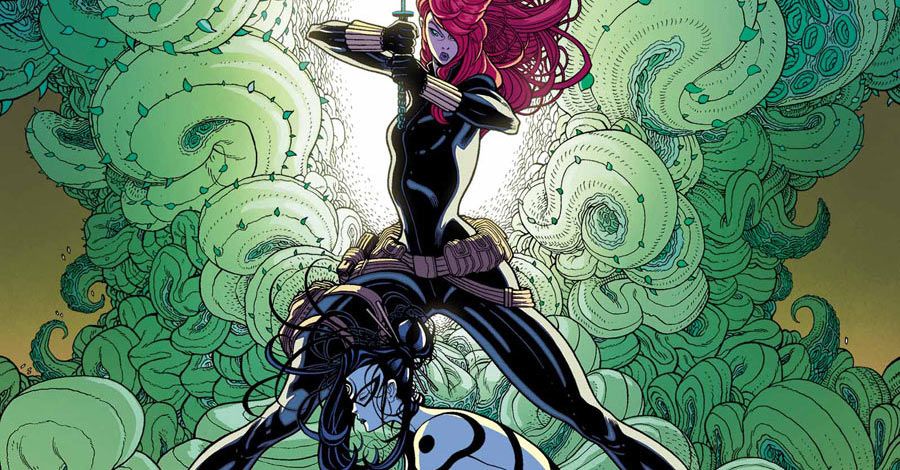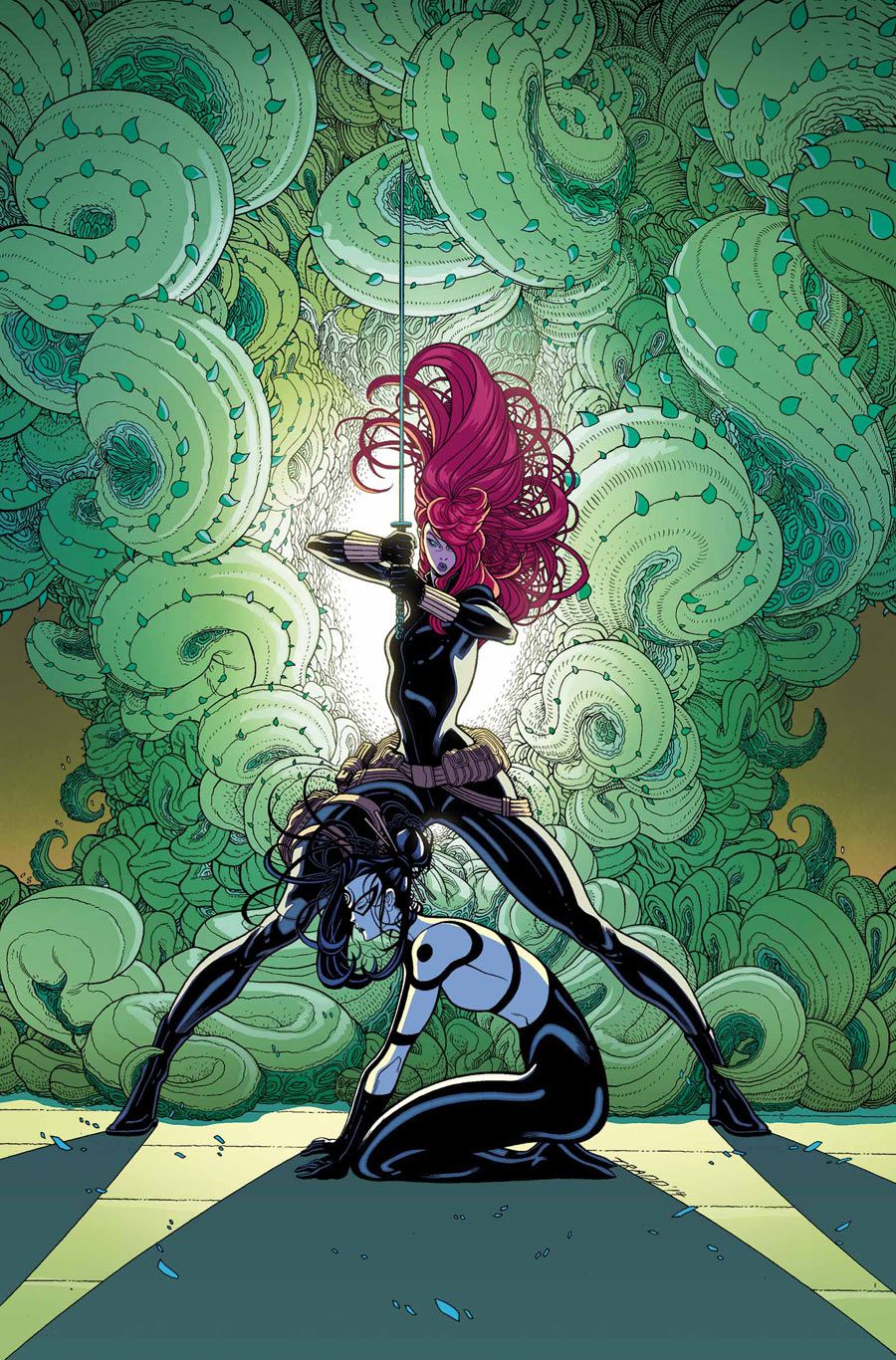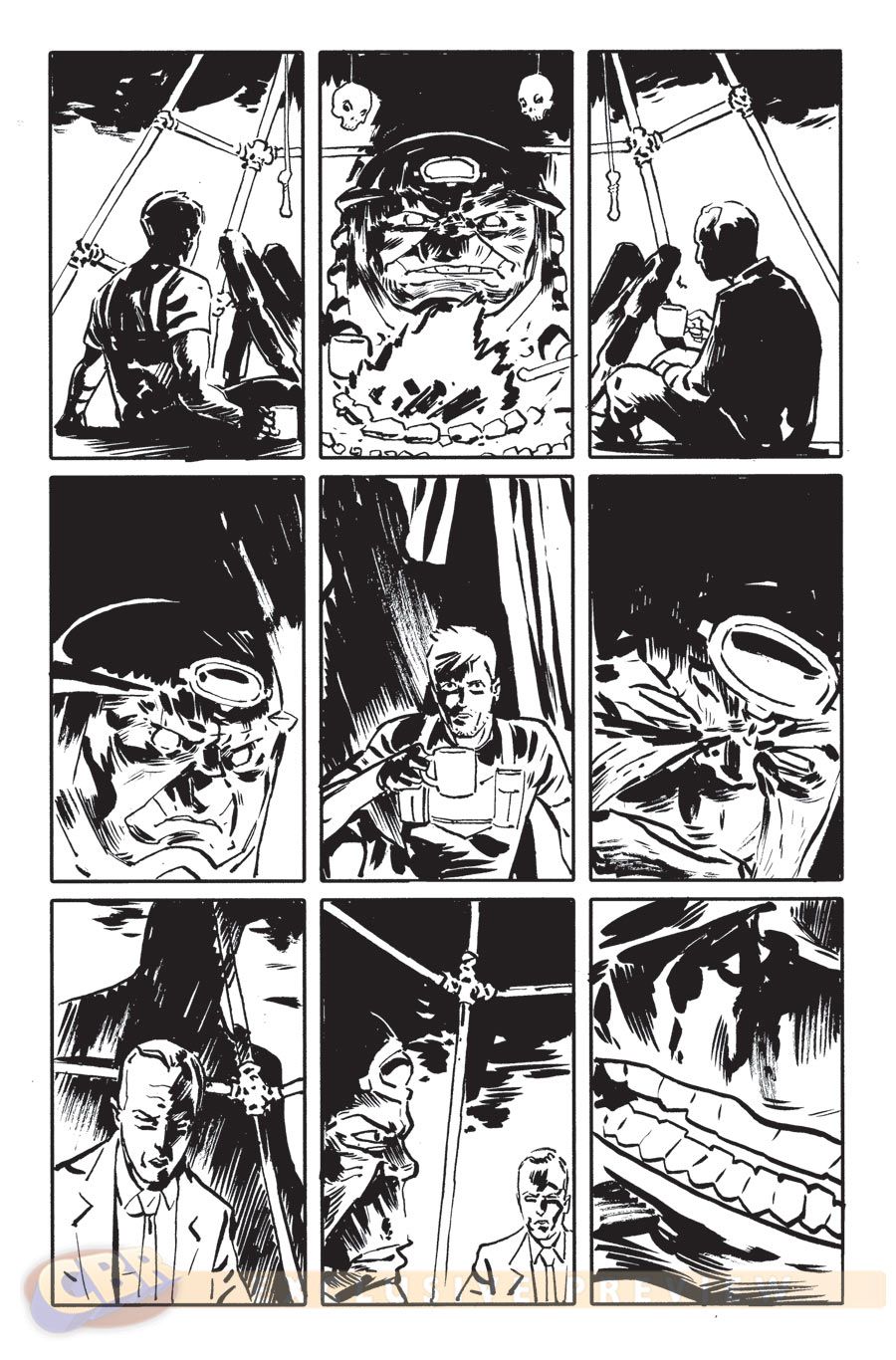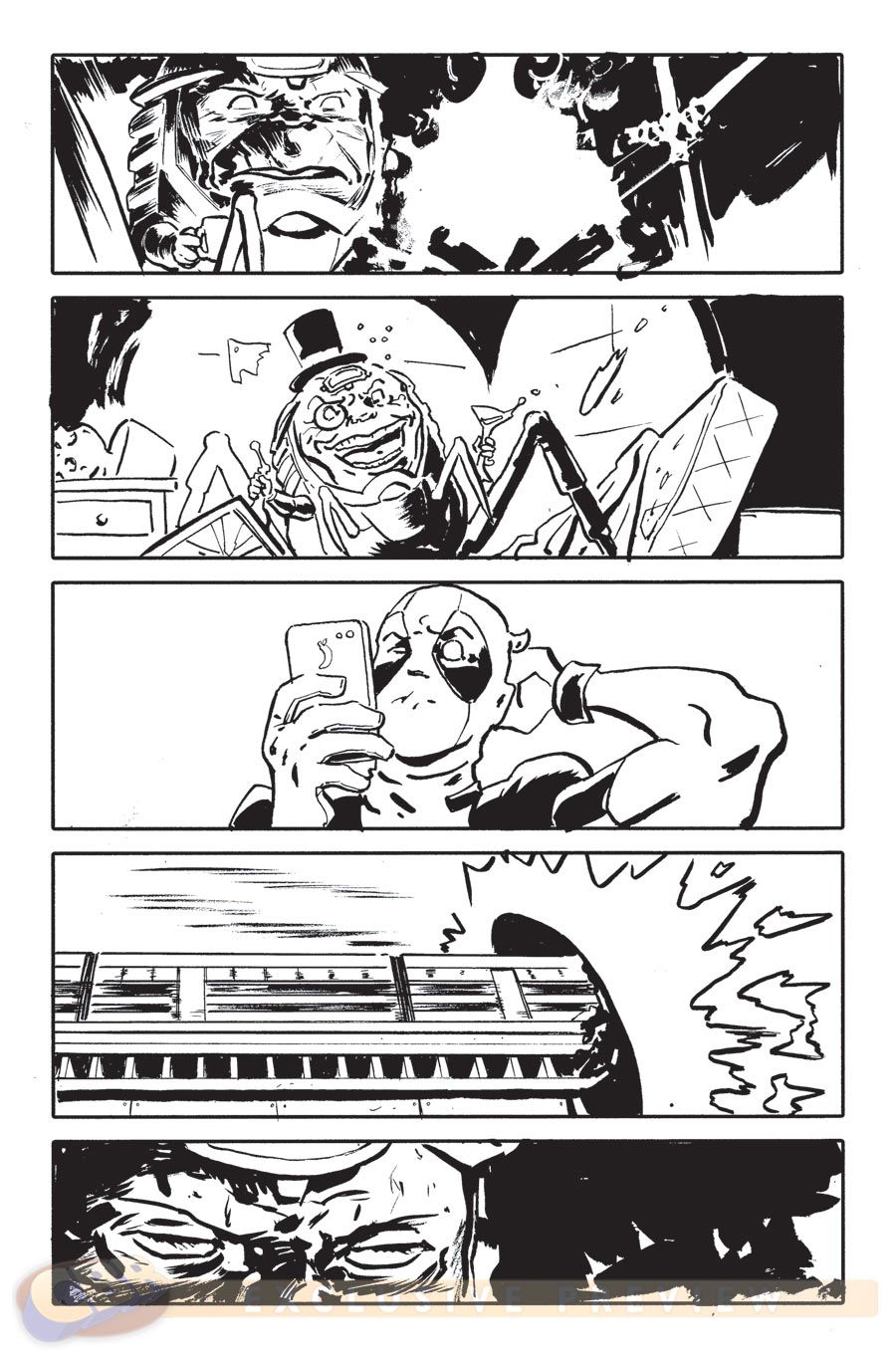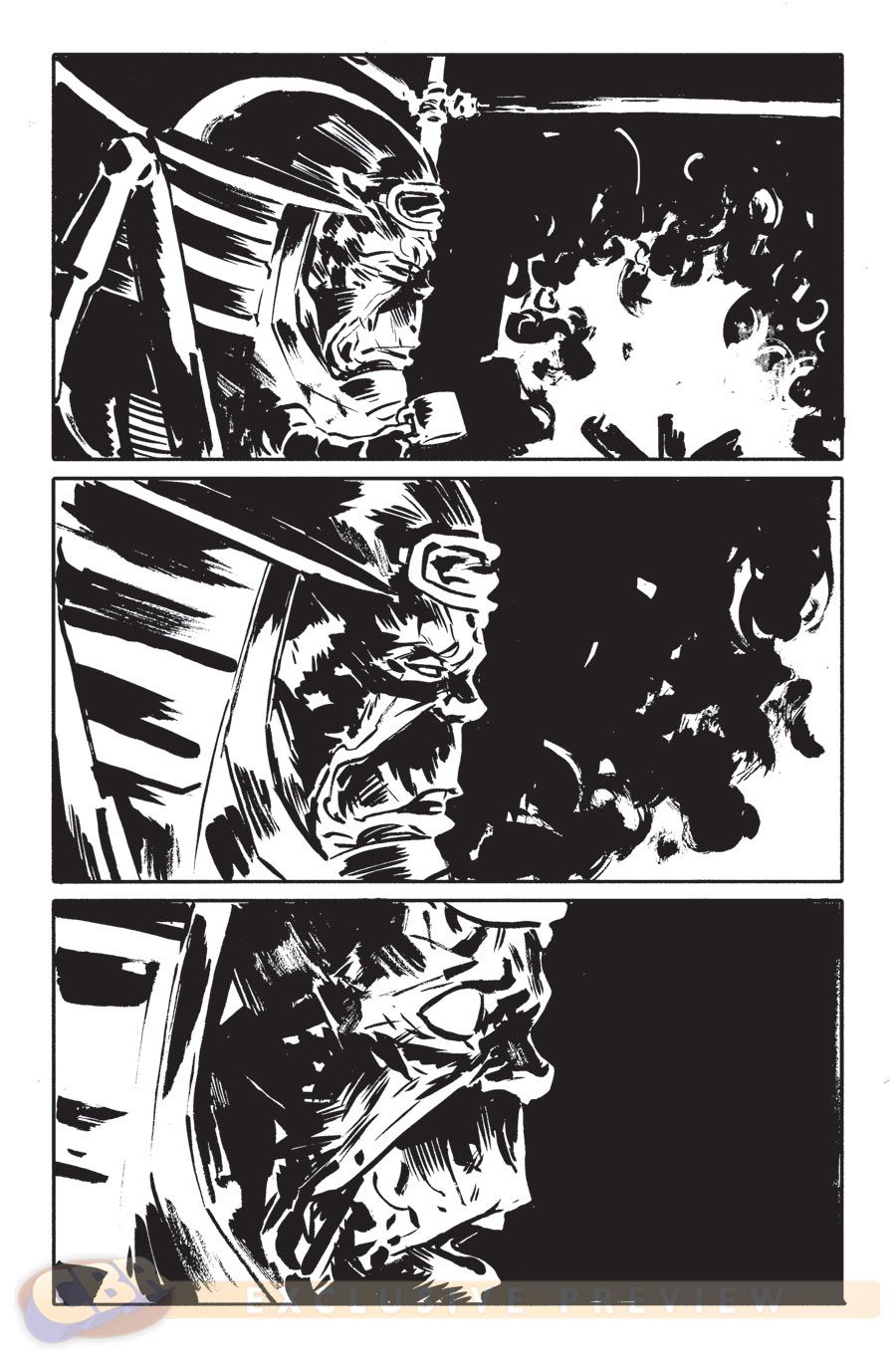With their brightly colored costumes and flashy powers, superheroes are pretty much on the bottom of most peoples' list when gathering a team for shadowy espionage missions. However, when writer Ales Kot and artist Michael Walsh kicked off their run on the latest volume of Marvel Comics' "Secret Avengers" series, they leaned into that strangeness by plunging the titular team of spies, heroes and villains -- including S.H.I.E.L.D director Maria Hill, agents Nick Fury and Phil Coulson, Hawkeye, Black Widow, Spider-Woman, and former A.I.M. leader M.O.D.O.K. -- into a surreal, and often humorous, long form story.
In recent issues, that story has heated up. A mysterious prophecy about a mythical place called Tlön, M.O.D.O.K revealing his love for Maria Hill (and desire to be a better person), and Black Widow becoming trapped in a mysterious alien dimension with the villainous Lady Bullseye have all taken their turn in the series' spotlight -- and that doesn't even include the ongoing bromance/professional rivalry budding between Hawkeye and Deadpool.
CBR News: Ales, one of the things that's become clear in recent issues is that you've been telling one long form story, where everything is connected. That has me curious about how you plot stories in general. When did you first have the idea for this story involving M.O.D.O.K., the Fury and Tlön? Did you have the story mapped out and outlined in its entirety before you began working on the book?
Ales Kot: The answer is no, I didn't have much of this planned at all. I believe in working with my subconscious and layering effects the way one would layer effects when making a song -- I don't necessarily know why some things feel right to do, and while they feel right in this specific spot, but I do it because I feel it's right. And feeling is really the operative word, here. I am learning more and more about preparation, so it's a matter of figuring out what I want to do -- and then being prepared to completely dump it, or change it, when something else comes along. But whatever I do, it always has to be in service of the story.
Two examples -- Issue #7 was improvised. I literally had no idea what I would be doing. In fact, I write most of the issues as improv. But, at the same time, I knew I threw in Borges references starting earlier in the run -- also without knowing why, but believing they were connected to the larger story at hand. Of course, reading those stories, I suspected they were leaking from my subconscious, and when I remembered the core theme, it all connected!
So I took the Borges story in question and wrote parts of #7 around it. And from that point on, the entire story started tightening around the themes it had since the beginning. They only became visible as I got further from them. See, I believe that if I'm listening to the characters -- there's a reason why they exist. I should just channel them, let them speak, then figure out what they say tells me about them.
And then, in the second half, craft something out of it, utilizing (again) both planning and improv. So, Tlön -- not a plan since the beginning, but it folds into everything we've done since the beginning because I see fiction the same way I see the world: As a unified place. It's a matter of looking past the immediately visible and realizing just how much of our world is invisible to us, and realizing that something being invisible does not mean it doesn't exist.
Did you know we see just about three percent of the light spectrum?
This volume of "Secret Avengers" has been surreal, psychedelic, strange and often very funny. Is that what you were aiming for? What inspired the tone of this series?
When we started the series, I said I was especially inspired by "Arrested Development," "Breaking Bad" and Michael Bay. I stand by that.
It's just -- it's hard for me to take superheroes seriously, especially when they pretend to be spies, in their special outfits. I don't feel like I have to be brutally sarcastic about it, but I do feel like I sometimes have to make fun of it (kindly), because that's honest to who I am as a person. And same goes for the rest -- if anything, I believe this series has a unique voice, something of an auteur taste -- not just due to me, but also to Mike Walsh, Tradd Moore, Matt Wilson and Clayton Cowles. Surreal, psychedelic, strange and often very funny -- when I look at my life, yeah, I can certainly describe big parts of it that way, if not the entirety of it. Depends on the angle.
Michael Walsh has done the interiors for every issue of this volume of "Secret Avengers," so I imagine he's been extremely important in creating the series' signature tone. What kind of influence has he had on the humor and strangeness of "Secret Avengers?"
Oh, Mike is an astonishing creator, and this comic would not exist without him. I knew I wanted to work with Mike from the start. He's a brilliant inventor, he's fast, sharp, gets page economy, and his characters feel true and not like approximations. The mouse in #1 is an integral part of the story in #2, and I had no idea that would be the case until Mike drew it into #1. I changed the story based on that. We push each other.
You helped end the last volume of "Secret Avengers," which brought M.O.D.O.K. into the book, and he's figured prominently in this latest volume. So clearly you enjoy writing the character. At the beginning of the series, it appeared he was aiding the Secret Avengers for selfish reasons, but the ending of Issue #11 suggests that M.O.D.O.K. has actually embraced altruism and heroism -- and his journey towards those things started with his attraction to Maria Hill and a change of perspective. What made you want to take M.O.D.O.K. on this kind of journey?
M.O.D.O.K. is my shadow self. I was bullied as a kid, and I had pretty severe acceptance issues. I really wanted to be accepted and loved by the community, and early in school I got a full dose of what it feels like when you're on the opposite side of that. So I internalized a lot -- and as I started working with that, in therapy and otherwise, I became more at peace with myself, started seeing more of what formed me and started re-formatting myself. Somewhere along the way, I realized M.O.D.O.K. really fits this idea of a shadow self that is internalizing, manipulating, being afraid of being seen, being afraid of being judged -- and I worked with that.
What happens when you see yourself as you really are? Well, you can either stay that way -- or you can change it. There's a reason why M.O.D.O.K. tells Hill he sees her as his mirror. I'm not saying that's all she is -- nope, I've had enough of fictional or real men imposing their perception on women and seeing them as nothing but mirrors of their needs and wishes -- but it's a part of this recognition, of seeing, "Oh, there's someone else who is sort of like me, a recognition that happened for myself, with myself, and with other people, too."
Right now, I'm in a place where I want to be accepted, but not by compromising myself -- because then it wouldn't be the real me who would be accepted, you know?
In Issue #11, M.O.D.O.K. revealed his change of heart to Hawkeye and Phil Coulson, both of whom have played significant roles in recent issues. Coulson's friend and former Army buddy Nick Fury, though, has been out of commission for a few issues now because of an acid attack to the face. Issue #11 ended with the Cybiote know as The Fury doing something to Fury's comatose form. Does this mean Nick will be back in an active role in upcoming issues?
Teaser: No more coma.
Teaser two: Things blow up.
Meanwhile, Maria Hill and Spider-Woman were falling into the clutches of M.O.D.O.K.'s treacherous former assistant, Snapper, who was engaging in what he felt was his end game. What's running through Maria and Jessica's minds as they fly away in Snapper's shuttle?
I don't want to tell, and here's why -- I want it to be open to interpretation. I'm not interested in being didactic and telling readers what to think or feel when they read the comics I write. Something that's very beautiful about comics is all the empty spaces between panels that we fill with our own perception of time and space -- and with our own meaning(s). Comics ignite imaginations.
Black Widow has been stranded in another dimension with Lady Bullseye, and the cover to Issue #12 suggests Natasha is about to come back into the story in a big way. What can you tell us about Natasha's role in the next few issues? Which aspects of her character are you interested in examining?
Kicking ass and being a good friend.
Can we expect answers to questions about the mysterious Tlön soon? In Issue #11, it felt like what Tlön ultimately becomes is up to the people who dream it into existence -- is that correct? And is what it becomes dependent on the points of view of the bitter and vengeful Snapper and M.O.D.O.K., who is trying to be something better? Or is there still more to be revealed about Tlön?
That is indeed correct! You're going in the right direction(s) with all of these questions, I can tell you that. I can also say that we're going full commando in this arc, and that there's a Spider-Woman beat -- and a page -- I'm particularly excited for. Plus, remember #3, that panel of M.O.D.O.K. with a shotgun, on a porch, wearing an apron?
Things come together during this arc. It's the final chapter of the story I signed on to tell with Mike and the rest of the crew.
I love you all! Thank you for your kindness, for your support, for your care, for your money. And if you're not reading "Secret Avengers" -- I love you anyway! Happy end of 2014, and a beautiful 2015!

